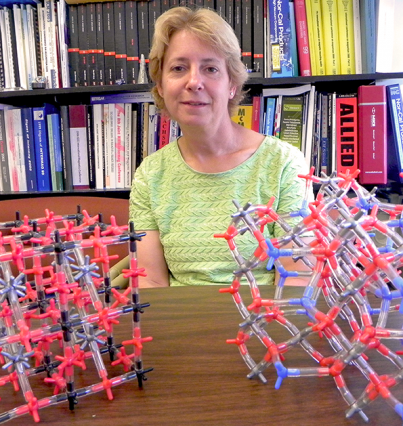Materials combining the magnetic and electrical properties of different iron oxides, which could underlie new technologies for computer memory and computation, are the focus of intense work in MIT Professor Caroline Ross's Magnetic Materials and Devices Group lab. Some magnetic oxides, such as cobalt iron oxide (CFO), have controllable magnetic behavior, which when combined with an electrically active material such as bismuth iron oxide (BFO), can yield a promising material for future logic or memory devices. Such a material combining the ferroelectric or piezoelectric properties, of BFO with the magnetic properties of CFO, is called multiferroic. The two oxides also have different crystal structures and were grown on a substrate of another oxide – strontium titanate (SrTiO3).
"They grow as regions of one material next to regions of the other, and because of the way the crystal structures match up with the substrate, you can get pillars of one inside a matrix of the other. In our case, we grow pillars of the spinel, which is magnetic, inside a matrix of the perovskite, which is a ferroelectric. So you have a thin film, which is both ferroelectric and ferrimagnetic. Because the two phases are actually touching, if you apply an electric field, you can switch the magnetism, and if you apply a magnetic field, you can switch the ferroelectricity, so you actually get this two-phase material called a multiferroic," says Ross, the Toyota Professor of Materials Science and Engineering. Ross also is associate department head for the Department of Materials Science and Engineering in MIT's School of Engineering.
Read the full article
New techniques for combining complex oxide thin films promise electrical control of magnetic properties for data storage and computing.
Publication Date:

Caption:
Caroline Ross uses models to demonstrate the crystal structures of complex metal oxides, such as spinel and perovskite phases.
Credits:
Photo: Denis Paiste/Materials Processing Center





